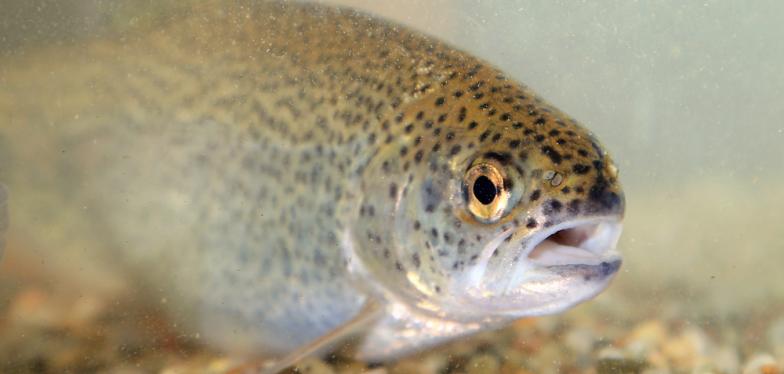Trout and Monsieur Hawarden saved Ligneuville in the Eastern cantons from oblivion

In 1977, the double municipality of Bellevaux-Ligneuville merged with Malmedy. Vast forests of spruce, beech and oak, steep slopes, gentle undulations, pastoral meadows, panoramas and the murmuring Amblève primarily attract hikers.
In addition to its natural beauty, fish, especially trout, also contribute to Ligneuville's image. At the end of the 12th century, there was already a Confrérie des Chevaliers de la Truite, a 'brotherhood of knights of the trout', so to speak. The village can justifiably call itself the cradle of trout farming. From 1929, the brothers Hermann and Hubert Gabriel started out in this economic activity. After World War II, they re-found their former élan and their company grew into one of the country's leading fish farms. Since 1984, Ligneuville has called itself the Capitale de la Truite and every two years it organises the popular Festival de la Truite.
For a totally different kind of curiosity, you should go to the cemetery, just past the parish church along the busy main road from St-Vith to Malmedy. On one of the tombstones, surrounded by a beautiful wrought iron fence, stands the inscription: Ici repose le corps de Mlle Mériora Gillibrand en son vivant Monsieur Hawarden (Here lies the body of Miss Mériora Gillibrand, during her lifetime, Monsieur Hawarden).
Around 1850, the then 43-year-old Monsieur Hawarden settled down in Ligneuville. He moved in with the distinguished Deschamps family, who were no stranger to Dutch and French court circles. In 1848, Paris was rocked by revolution. He was apparently in the thick of it when the police identified him as one of the rioters, and put him in jail. He was released on the intercession of the Deschamps family, as they could prove that Monsieur was actually... a woman. From that point on, she went through life dressed as a man. According to one well-informed noble source, Monsieur Hawarden had something else on his mind in Paris. Two male love rivals, clearly well aware of Monsieur's true identity, courted her and settled the dispute with a classic duel. However, the pursued lady was not at all happy with the outcome, and apparently shot the unfortunate winner of the duel. There is no record of any prosecution, but things got hot under the collar. In Ligneuville, Monsieur Hawarden was a popular figure, an expert with a rifle and pistol, a fascinating storyteller who was often spotted in the area with his 12-year-old walking companion Alexandre Micha.
Monsieur Hawarden died on 1 March 1863. The first death certificate stated that Arthur Hawarden, of unknown origin and lineage, had died at the age of 52. Later, for reasons of inheritance, a family member had the death certificate amended, to Maria Mériora Gillibrand, 56 years old, unmarried, with both parents mentioned.
The Flemish author Filip De Pillecyn, a teacher in Malmedy from 1926 to 1933, wrote an intense psychological novel about this melancholic life story in 1935, which was turned into a film by Harry Kümel in 1968.